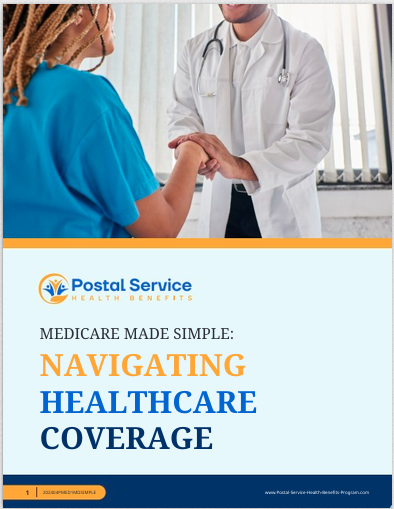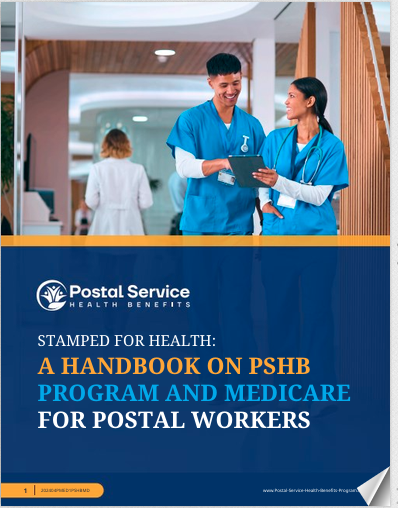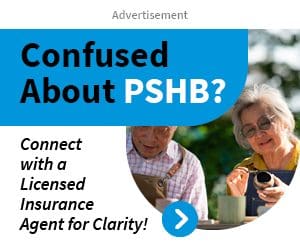Key Takeaways
- Postal Service retirees and their families must understand specific eligibility requirements and deadlines for Medicare enrollment in 2025 to ensure uninterrupted health coverage.
- Familiarizing yourself with the different Medicare parts and their costs can help you make informed decisions about your healthcare options.
Medicare Enrollment Guidelines for Postal Service Retirees and Their Families in 2025
Medicare enrollment is a crucial process for Postal Service retirees and their families. Understanding the guidelines for 2025 can help ensure that retirees and their dependents receive the healthcare benefits they need. This comprehensive guide covers eligibility criteria, enrollment periods, benefits, and more.
Understanding Medicare Enrollment for Postal Service Retirees in 2025
Medicare is a federal health insurance program primarily for individuals aged 65 and older. For Postal Service retirees, enrolling in Medicare involves understanding specific criteria and processes. Eligibility for Medicare includes age requirements, employment history, and specific enrollment periods tailored for retirees and their families. The program offers various parts, each covering different aspects of healthcare, including hospital insurance, medical insurance, and prescription drug coverage.
Eligibility Criteria for Medicare Enrollment
To enroll in Medicare, Postal Service retirees and their families must meet certain eligibility criteria:
- Age: Individuals must be 65 years or older. However, some younger individuals with specific disabilities or conditions like End-Stage Renal Disease (ESRD) may also qualify.
- Work History: Retirees generally need at least 10 years (40 quarters) of Medicare-covered employment to qualify for premium-free Part A. This typically includes years of service with the Postal Service.
- Special Enrollment Periods (SEPs): Retirees who miss their Initial Enrollment Period (IEP) may qualify for SEPs, especially if they were covered under a group health plan through the Postal Service.
Family members, such as spouses and dependents, may also be eligible for Medicare based on the retiree’s work history and their own circumstances.
Key Deadlines and Enrollment Periods for Medicare
Understanding the key enrollment periods is crucial to avoid late penalties and gaps in coverage:
- Initial Enrollment Period (IEP): This seven-month period begins three months before an individual turns 65, includes their birth month, and ends three months after. It is the first opportunity for retirees to enroll in Medicare.
- General Enrollment Period (GEP): Occurs annually from January 1 to March 31. If retirees miss their IEP, they can enroll during the GEP, with coverage starting July 1 of the same year. However, late enrollment penalties may apply.
- Special Enrollment Periods (SEPs): Retirees and their families may qualify for SEPs if they are covered under an employer-sponsored health plan. For Postal Service retirees, this is especially relevant as many maintain such coverage through the Postal Service Health Benefits (PSHB) Program.
Medicare Part A and Part B: Coverage and Costs
Medicare is divided into different parts, each covering various healthcare services. Understanding these parts and their associated costs is essential for making informed decisions:
- Medicare Part A (Hospital Insurance): Covers inpatient hospital stays, skilled nursing facility care, hospice care, and some home health care. Most retirees qualify for premium-free Part A based on their or their spouse’s work history. Those who do not meet the work history requirements may have to pay a monthly premium.
- Medicare Part B (Medical Insurance): Covers outpatient care, preventive services, doctor visits, and some home health care. Part B requires a monthly premium, which is determined based on the retiree’s income. Enrollment in Part B is voluntary but often necessary for comprehensive coverage.
- Medicare Part C (Medicare Advantage): Offered by private companies, these plans provide Part A and Part B coverage and often include additional benefits such as vision, dental, and prescription drugs. Costs and coverage details vary by plan.
- Medicare Part D (Prescription Drug Coverage): Helps cover the cost of prescription drugs. Part D plans are also offered by private companies and vary in terms of cost and coverage. It’s important for retirees to compare plans to find one that meets their medication needs.
Choosing the Right Medicare Plan for You and Your Family
Selecting the right Medicare plan involves considering your healthcare needs and budget. Here are some tips for choosing the best plan:
- Evaluate Healthcare Needs: Consider the types of medical services you and your family frequently use. If you have specific conditions that require specialist care or certain medications, make sure these are covered under the plan you choose.
- Compare Costs: Look at the premiums, deductibles, copayments, and out-of-pocket maximums for different plans. Consider how these costs fit into your budget.
- Check Network Providers: Ensure that your preferred doctors and hospitals are in the plan’s network. This is especially important for Medicare Advantage plans, which typically have network restrictions.
- Review Additional Benefits: Some plans offer extra benefits like dental, vision, and wellness programs. Determine if these benefits are important to you and your family.
Special Enrollment Periods and Avoiding Penalties
Special Enrollment Periods (SEPs) provide flexibility for retirees who miss their Initial Enrollment Period or experience certain life events. Understanding SEPs can help avoid late enrollment penalties:
- Employer Coverage Transition: Retirees transitioning from employer-sponsored health plans, such as those provided by the Postal Service, may qualify for a SEP to enroll in Medicare without penalties.
- Qualifying Life Events: Events such as moving to a new area, losing other health coverage, or changes in household size can trigger SEPs. It’s important to report these events promptly to take advantage of SEPs.
- Avoiding Late Enrollment Penalties: Enrolling during the IEP or an SEP can help avoid late enrollment penalties, which can permanently increase your premiums. Staying informed about deadlines and enrollment periods is crucial.
Ensuring Comprehensive Coverage for Postal Service Retirees and Their Families
Navigating Medicare enrollment for Postal Service retirees and their families requires a clear understanding of eligibility criteria, enrollment periods, coverage options, and costs. By staying informed and proactive, retirees can ensure they receive the healthcare benefits they need without unnecessary penalties or gaps in coverage. Evaluating healthcare needs, comparing plans, and utilizing Special Enrollment Periods are key steps in securing comprehensive and affordable health coverage for the future.
Contact Information:
Email: [email protected]
Phone: 5105556789







